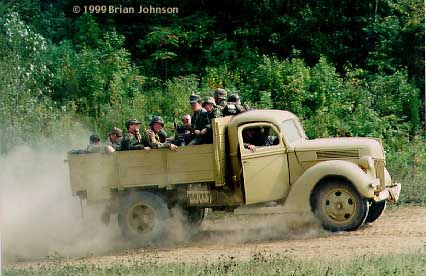Boeing B-17 Flying Fortress (în română: Fortăreața Zburătoare) a fost un tip de bombardier greu, cvadrimotor, proiectat în anii 1930 pentru Corpul Aerian al Armatei Statelor Unite ale Americii (precursorul Forțelor Aeriene ale SUA din prezent). Bombardierul a fost introdus în dotare în anul 1938, fiind îmbunătățit ulterior și construit în mai multe variante.
B-17 a fost folosit de Forțele Aeriene ale Armatei Statelor Unite ale Americii în campania de bombardament strategic pe timp de zi împotriva țintelor militare și industriale ale Germaniei naziste. Bombardierul greu a fost folosit în principal în Vestul Europei, fiind folosit într-o măsură mai mică și în Războiul din Pacific. Fortăreața Zburătoare a lansat mai multe bombe decât oricare alt avion american din timpul celui de-al Doilea Război Mondial. Din cele 1,5 milioane de tone de bombe aruncate asupra Germaniei naziste și a teritoriilor ocupate de acest stat de avioanele americane, 640.000 de tone au fost lansate de bombardierele B-17
The Flying Fortress is one of the most famous airplanes ever built. The B-17 prototype first flew on July 28, 1935. Although few B-17s were in service on Dec. 7, 1941, production quickly accelerated after the U.S. entry into World War II. The aircraft served in every combat zone, but it is best known for the daylight strategic bombing of German industrial targets. Production ended in May 1945 and totaled 12,726.
In March 1944 this B-17G was assigned to the 91st Bomb Group -- "The Ragged Irregulars" -- and based at Bassingbourn, England. There its crew named it Shoo Shoo Shoo Baby, after a popular song. It flew 24 combat missions in WWII, receiving flak damage seven times. Its first mission (Frankfurt, Germany) was on March 24, 1944, and last mission (Posen, Poland) on May 29, 1944, when engine problems forced a landing in neutral Sweden where the airplane and crew were interned.
In 1968 Shoo Shoo Shoo Baby was found abandoned in France, and the French government presented the airplane to the U.S. Air Force. In July 1978 the 512th Military Airlift Wing moved it to Dover Air Force Base, Del., for restoration by the volunteers of the 512th Antique Restoration Group. After a massive 10-year job of restoration to flying condition, the aircraft was flown to the museum in October 1988.
TECHNICAL NOTES:
Armament: 13 .50-cal. machine guns; normal bomb load of 6,000 lbs.
Engines: Four Wright Cyclone R-1820s of 1,200 hp each
Maximum speed: 300 mph
Cruising speed: 170 mph
Range: 1,850 miles
Ceiling: 35,000 ft.
Span: 103 ft. 10 in.
Length: 74 ft. 4 in.
Height: 19 ft. 1 in.
Weight: 55,000 lbs. loaded
Serial number: 42-32076






















